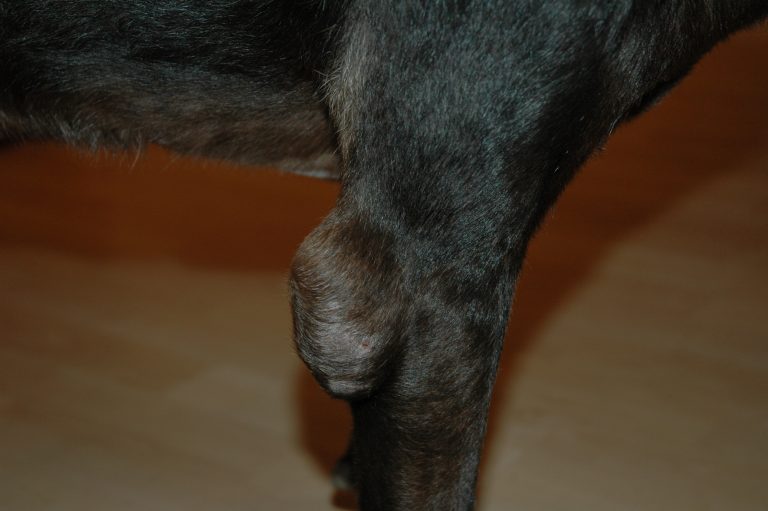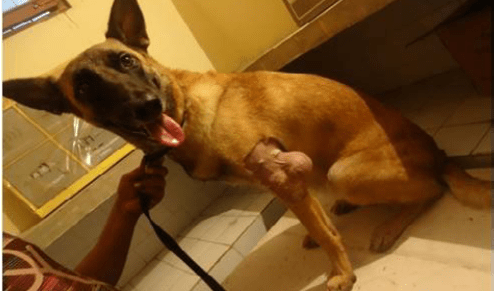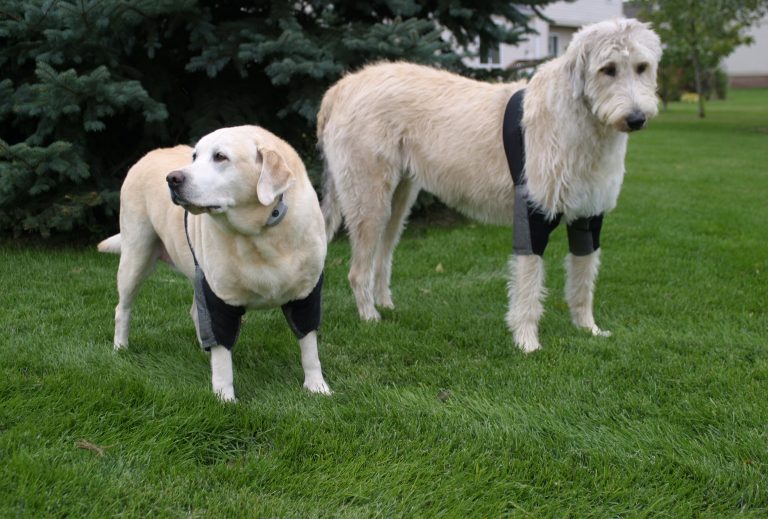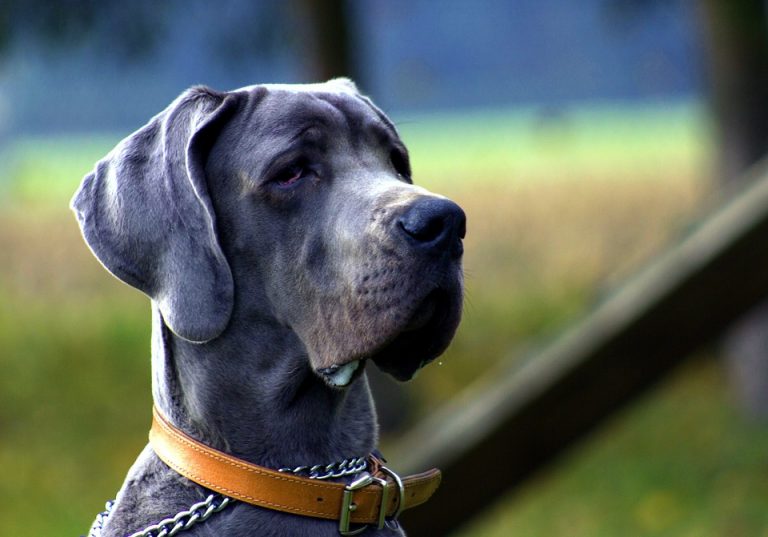Not every mass or fluctuant swelling in dogs is a cancer. Of course, veterinarians should evaluate and aspirate any skin mass that has been present for more than one month and/or that is larger than a pea (approximately one centimeter). Thankfully, most skin masses are benign. If the mass feels fluid-filled and is located over a boney prominence, chances are it’s a non-painful condition called a hygroma. One of you – a dedicated follower of CriticalCareDVM.com – requested more information on this problem. So, this week I’ve devoted some time to expounding on hygromas in dogs. Happy reading!
Hygromas – What are they?
In the simplest terms, a hygroma is a fluid-filled mass that forms over a boney prominence of the body, most commonly the olecranon of the elbows. Other common locations include the hips and the tibiotarsal joints (aka: hocks, ankles). The fluid is contained within a very thick fibrous capsule that develops underneath the skin called a bursa. So, the medical term for an elbow hygroma is olecranon bursitis. A hygroma initially is small, soft, and non-painful, but may grow quite large and may even become painful and infected. An uninfected hygroma is often called uncomplicated while an infected one is referred to as complicated.

Hygromas – What causes them?
As I mentioned previously, a hygroma develops at sites of boney prominences like the elbows. The skin in these regions is thin, and simple actions like lying down on hard surfaces (e.g.: hardwood floors, concrete, tiled floors) causes trauma. Chronic and repeated injury to the skin around boney prominences causes the body to react. Initially, the body forms a callous. With repeated trauma, it tries to further protect these areas by forming the biological equivalent of a pillow in the form of a fluid-filled mass. With continued trauma, a hygroma grows larger and can become infected.

Large and giant breed dogs are over-represented due to their size. There is no sex predilection, but overweight and obese dogs are more likely to develop these lesions. Dogs that are less active are over-represented because they spend more time lying down with pressure applied to their boney prominences more than their more active counterparts.
Hygromas – How are they diagnosed?
Accurately diagnosed hygromas is relatively straightforward. Uncomplicated hygromas are non-painful and typically only represent a cosmetic concern. If hygromas become infected, they are typically painful, reddened, and feel warm to the touch. Affected dogs often resent manipulation of the affected area.

Hygromas – How are they treated?
Treatment for hygromas varies depending on their nature – uncomplicated or complicated. A non-painful, non-infected hygroma is typically treated simply by providing adequately padding and bedding. There are many options for protecting boney prominences like the elbows, including:
- Elbow bandages placed by a veterinary team
- Commercially available elbow pads
- Foam floor tiles

Many pet parents want veterinarians to remove the fluid from an uncomplicated hygroma because the mass is unsightly. This isn’t necessarily the best thing to do! The body made the fluid for a reason. Aspirating fluid from an uncomplicated hygroma could potentially introduce bacteria from the skin, thus creating a complicated hygroma. If pet owners provide appropriate bedding and padding for their fur baby, most uncomplicated hygromas often resolve in 2-3 weeks.
Treatment for an complicated hygroma must be more aggressive. Fluid from an infected lesion should be submitted to a veterinary reference laboratory for culture. Furthermore, the fluid should be surgically drained to remove as much infected material as possible. After surgery and with proper padding and bedding, a complicated hygroma usually resolves uneventfully. Unfortunately, some chronically drain and/or develop ulcerated skin. These patients require more extensive surgery, and pet parents are strongly encouraged to consult with a board-certified veterinary surgeon.
The take-away message about hygromas in dogs…
Hygromas are fluid-filled masses that form over the boney prominences of the boney like the elbows. Chronic and repeated trauma the thin skin over these regions creates inflammation, and the body tries to protect these areas by forming hygromas. Hygromas are usually non-painful and small, but may progress and become infected. When identified early, hygromas resolve with padding and comfortably bedding. Infected hygromas require more extensive intervention, including surgery. Thus, preventative measures like providing adequately bedding are of paramount importance.
To find a board-certified veterinary surgeon, please visit the American College of Veterinary Surgeons.
Wishing you wet-nosed kisses,
CriticalCareDVM





